Nuts & seeds are often taboo on a low oxalate, kidney stone friendly diet. This is probably because nuts and seeds are notorious for being high in oxalate. But, there are huge differences in oxalate between different nuts and seeds. If done correctly, nuts and seeds can be a part of a healthy low oxalate diet!
*Please note that this post contains clearly identified affiliate links. If you click on these links and choose to make a purchase, I may receive a commission (at no cost to you). As an Amazon Associate I earn from qualifying purchases.
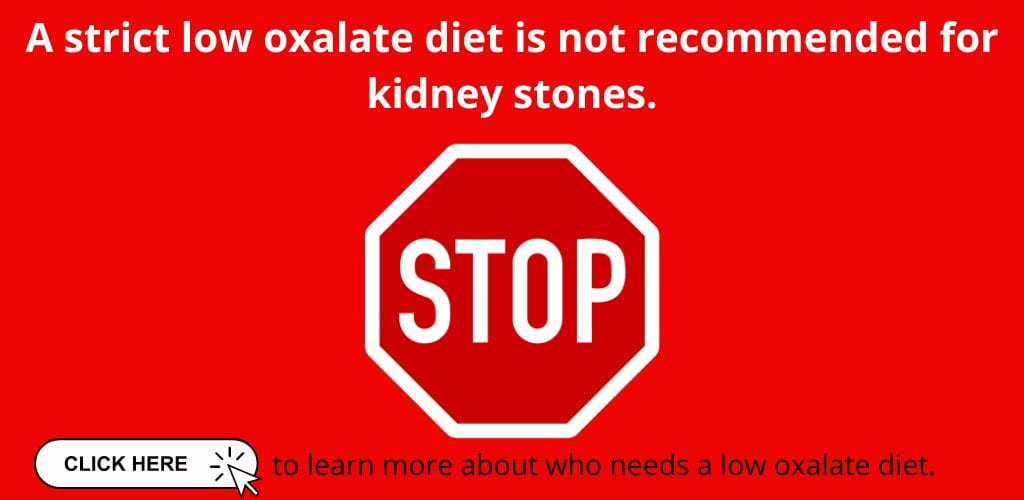
Table of Contents
Who Needs Low Oxalate Nuts?
Before we jump into which nuts and seeds are low in oxalate, it is important to know who needs to avoid high oxalate nuts and seeds.
Oxalate is most known for it’s role in kidney stones. However, not everyone with kidney stones needs to avoid oxalate. It is important to work with your doctor to figure out what kind of kidney stones you have. If you have a kidney stone other than calcium oxalate, avoiding oxalate will not reduce your risk of kidney stones.
If you were not able to have your kidney stone analyzed, a 24-hour urine test will tell you what kind of stones you are most likely to make. The test will also tell you what your kidney stone urine risk factors are.
Even for the same kind of kidney stone, urine risk factors can be different. For example, too much calcium in urine is the most common risk factor for calcium oxalate kidney stones. Other urine risk factors are high urine oxalate, low urine pH, low urine citrate and high urine uric acid. (1) You can target your specific risk factors with nutrition!
If you have high urine oxalate, it is important to follow a low oxalate diet, including low oxalate nuts. (2)
Remember that fluid, sodium, protein, calcium and healthy diet patterns all play very important roles in kidney stone prevention too! (1)
Why Eat Low Oxalate Nuts & Seeds?
Heart Health
Perhaps the biggest benefit of nuts and seeds is heart health! Nuts and seeds are a great source of heart healthy polyunsaturated, omega-3 and omega-6 fats. People who eat more nuts are less likely to have heart disease and high cholesterol. (3)
Fiber
Low oxalate nuts and seeds can be an important source of fiber. Eating enough fiber can be tough! Especially on a strict low oxalate diet. Adding healthy low oxalate nuts and seeds to your diet will help you get enough fiber. Women should eat 25 grams of fiber each day. Men should aim for 38 grams. (4) One ounce of pecans has about 3 grams of fiber. (5)
Fiber is most known for its benefit for bowel health. Eating enough fiber keeps you regular! Fiber can also help ward off heart disease and diabetes. (6)
Healthy Plant Protein
“Plant based” eating has become quite trendy in recent years – for good reason! Eating more plants like vegetables, fruits, whole grains, nuts and seeds is protective against chronic disease.
In light of the “plant based” movement, products such as Beyond Burger and Impossible Burger have taken off. Although these meat substitutes can be a healthy option on occasion, they tend to be very high in salt. If you have Chronic Kidney Disease, phosphorus additives may also be a concern.
If you are trying to cut back on meat, it is better to get protein from natural sources, such as whole grains, nuts, seeds, beans and lentils. Low oxalate nuts and seeds are a great source of plant based protein!
Brain Health
Nuts may also help protect your brain! Nuts are an important part of a Mediterranean diet pattern, which is associated with slower cognitive decline and reduced risk of Alzheimer’s disease. (7) In fact, nuts are a critical part of the “MIND” diet, which was created to target cognitive function and to prevent Alzheimer’s. The “MIND” diet has been proven to do just that! (8)
Low Oxalate Nuts
Coconut
0mg oxalate per ounce
Coconut comes in at the lowest oxalate amount – zero! However, the fat in coconut is not ideal. Coconut is very high in saturated fat, which is associated with worse heart health and is not endorsed by the American Heart Association.(9) Also, be careful of extra sugar in shredded coconut and coconut milk.
However, coconut is a great source of fiber! Enjoy coconut in smaller amounts and mix in other low oxalate nuts to keep your heart healthy!
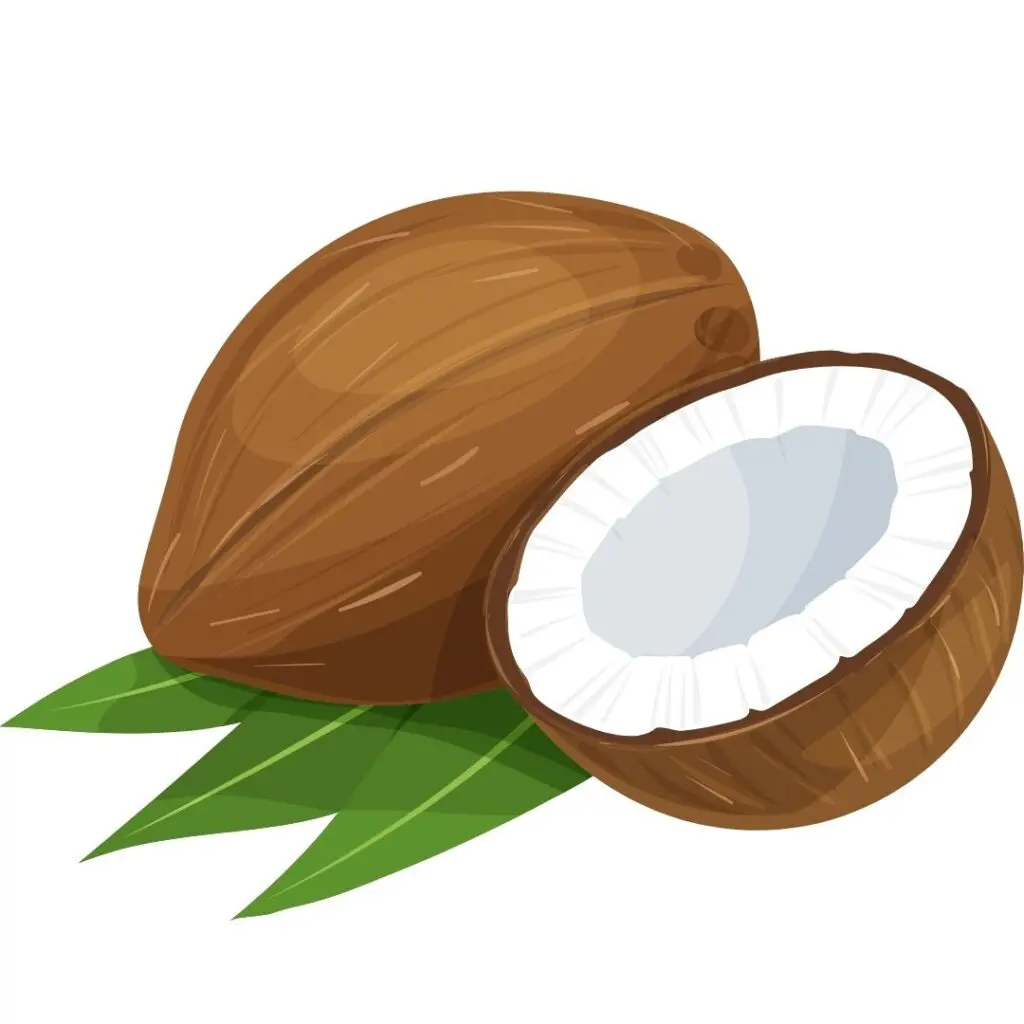
Macadamia Nuts
12mg oxalate per ounce
Macadamia nuts* are delicious in more than cookies! Macadamia nuts are a great low oxalate nut choice.
Pecans
10mg oxalate per ounce
Who doesn’t love pecans!? Sprinkle some pecans* on your salad or in oatmeal to add some fiber and healthy plant protein.
Pistachios
14mg oxalate per ounce
The perfect snack! Pistachios* are a great option for a low oxalate diet. They also happen to be one of the lowest calorie nuts.
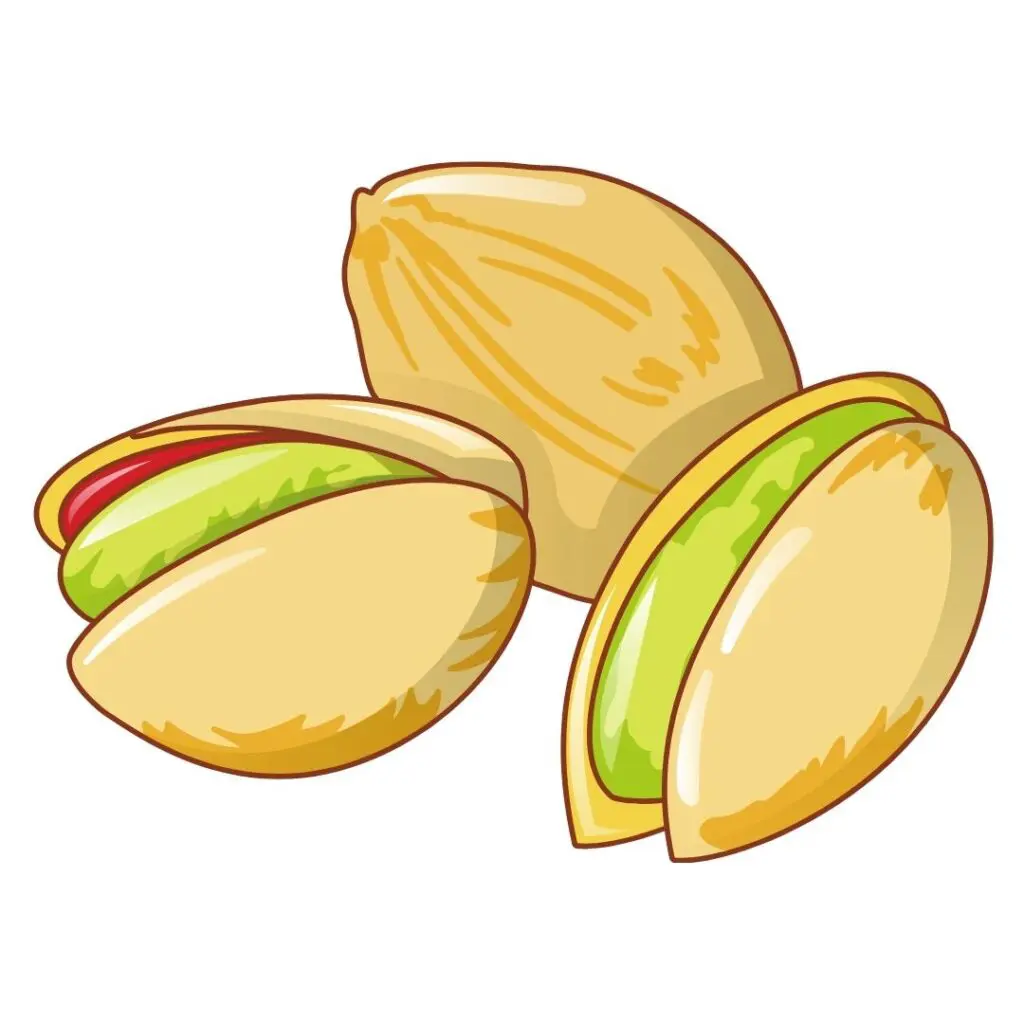
Walnuts
8mg oxalate per ounce
Walnuts* are packed with heart healthy polyunsaturated fat, making them a great option for your heart!
Low Oxalate Seeds
Flax Seeds
2mg oxalate per 2 tablespoons, ground
Flax seeds* pack 2 grams of fiber per tablespoon. They are also a good source of heart healthy omega-3 fats. Make sure to use ground flax seed, to be able to take full advantage of their benefits!
If you really like flax seeds, try Flackers*, a low oxalate cracker made from just flax seed, spices and a little salt!
Hemp seeds
3mg oxalate per 2 tablespoons
Hemp seeds* (or, hemp hearts) add a great crunch to almost anything! Sprinkle them on yogurt, salads or oatmeal.
Pumpkin Seeds
5mg oxalate per 1/4 cup
Pumpkin seeds* (or “pepitas”) are more than a treat in the fall! You can find pumpkin seeds year round. Add them to salads, oatmeal, yogurt or make your own low oxalate trail mix!
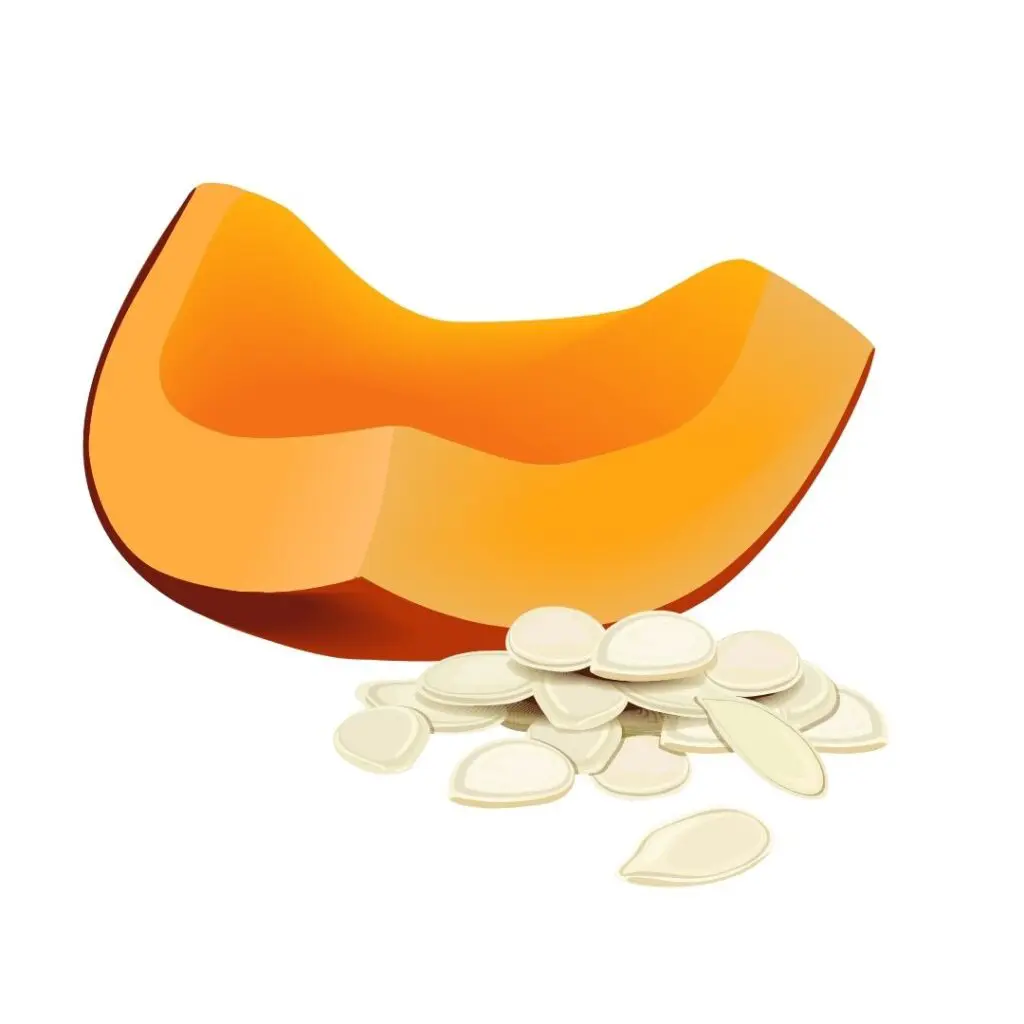
Sunflower Seeds
3mg oxalate per 1/4 cup
Sunflower seeds* are delicious on salads for a nutty flavor and crunch. Be careful to avoid salted and flavored sunflower seeds. Sunbutter* is made from sunflower seeds and is a tasty, lower oxalate alternative to peanut butter.
Watermelon Seeds
5mg oxalate per 1/4 cup
These can be harder to find, but watermelon seeds are another low oxalate seed.
High Oxalate Nuts & Seeds
On the flip side, there are some nuts and seeds that are very high in oxalate. If you have high urine oxalate, it is best to avoid these nuts and seeds. Or, eat them only on occasion!
- Almonds (122mg oxalate per ounce) – don’t forget almond butter, flour and milk are high in oxalate too!
- Brazil nuts (137mg oxalate per ounce)
- Cashews (49mg oxalate per ounce)
- Hazelnuts (63mg oxalate per ounce)
- Pine nuts (56mg oxalate per ounce)
- Chia seeds (45mg oxalate per 2 tablespoons)
- Sesame seeds (126mg oxalate per 2 tablespoons)
Advice for Eating Low Oxalate Nuts & Seeds
Watch Portion Size
Portion size is important to help control how much oxalate you eat. Even low oxalate nuts and seeds can add up!
A portion of nuts is 1 ounce, or about 1/4 cup of whole, shelled nuts. A portion of seeds is about 2 tablespoons for smaller seeds (like hemp or flax seeds), or a 1/4 cup for larger seeds (like sunflower or pumpkin seeds).
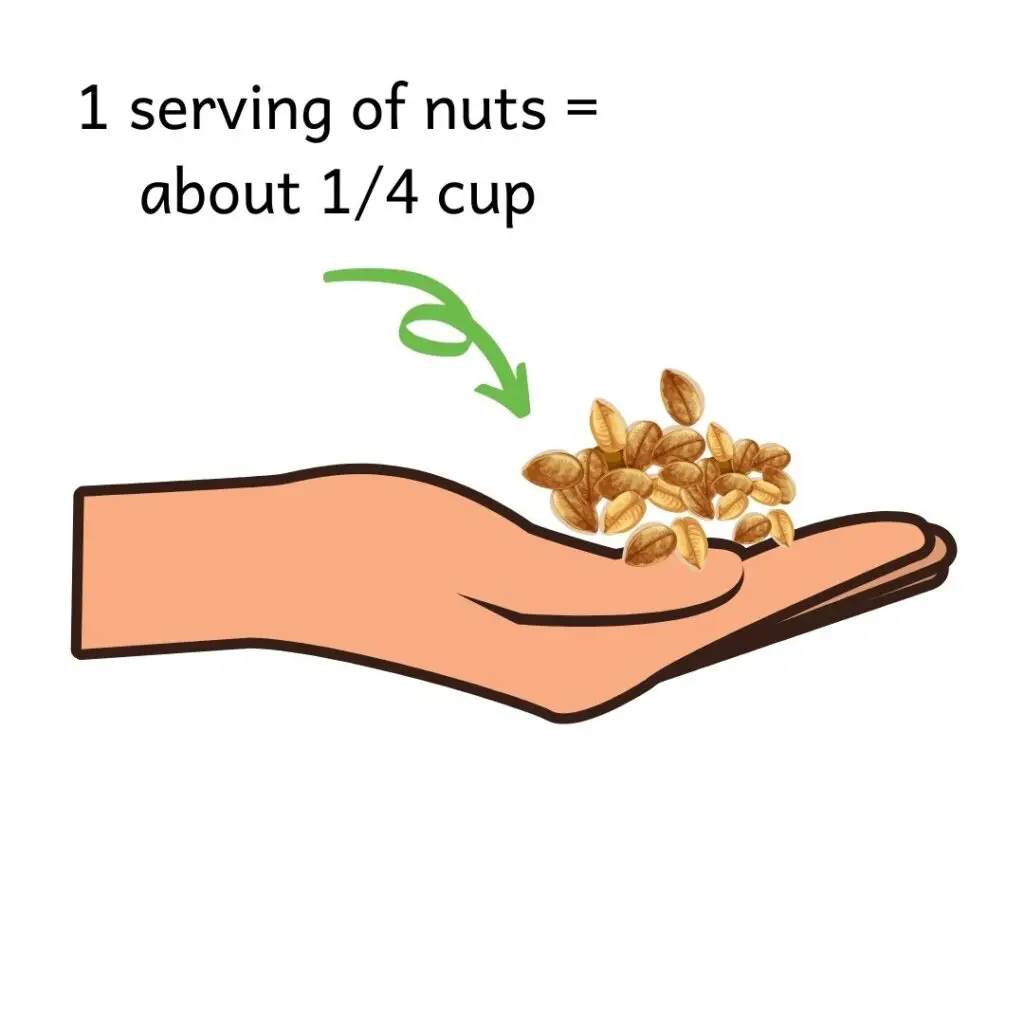
Choose Unsalted Low Oxalate Nuts!
Make sure to find unsalted or “lightly salted” nuts and seeds. Sodium plays a big role in kidney stones. Most people should limit sodium to 1,500-2,300mg per day to prevent kidney stones.
Happy Eating!
Melanie

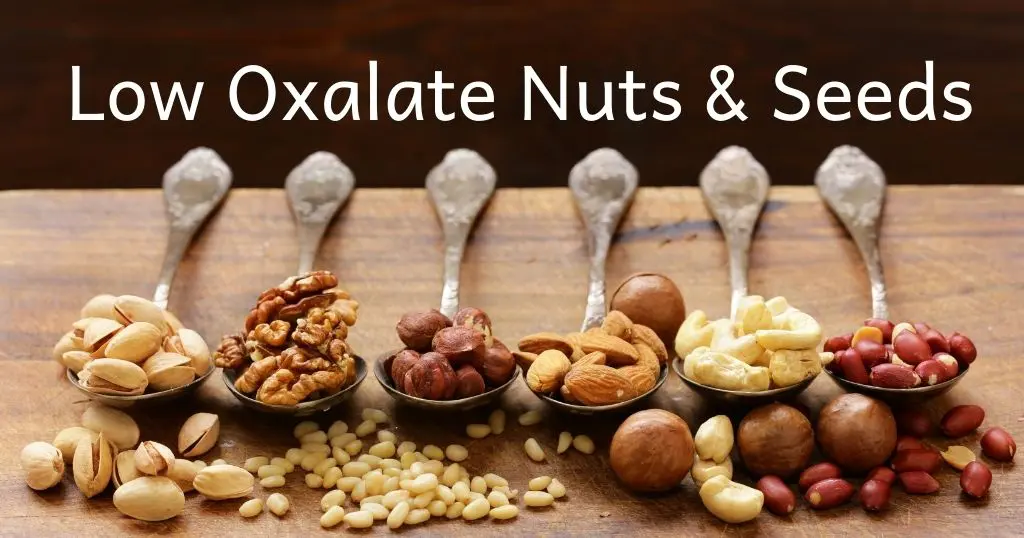
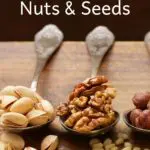
Hell! Thank you for your helpful information. I developed a kidney stone last year. I passed that one which was tested. 50/50 mono/dihydrate. This year i have another one. I had a litholink 24 urine test and I have high calcium oxalate type stones. I also have low citrate, and had low hydration. I have been on at least 48 ounces of lemon water per day now. I also take Natures’s Way Apple Cider Vinegar gummies. What’s your take on apple cider vinegar? My stone is not visible on ultrasound now, but I didn’t feel it pass. They said it could be hiding. Whatever that means. The
CT scan showed it, but the ultrasound I had later didn’t. I’m assuming the lemon water is helping a lot. The blood and white cells in my urine sample are only trace now. Before it was high then moderate. I was consuming a lot of almond based products, but not now of course. Especially almond milk. What plant based milk is my best option now? Unsweetened coconut or oat? Oats often produce gas in me, so not sure about that one. Also, what nut butter is best for me now? Sunflower, or is there another kind? The urologist gave me a list for the low oxalate diet, but the only nuts listed to avoid on it are almonds and cashews. I really appreciate your help! Thank you!
Hi Michelle! Thank so much for your comment. Very happy to hear that you had that urine test. The true value of that test is knowing WHY you are making calcium oxalate stones. It sounds like that low citrate and low urine volume is probably a part of it. That test also may have revealed some other things (such as high calcium? high oxalate? pH out of range? etc) that are making those stones more likely. These are the factors that would let me know what foods are best for you to eat. Without this info, I’d honestly just be guessing which food changes would really make a difference in stone prevention for you.
I help people prevent kidney stones and answer all of these types of questions in my course, Kidney Stone Nutrition School. I would love to help you!
I do have some general thoughts about apple cider vinegar and plant based milks.
How much Hemp seeds in grams in 2 tablespoons??i cant understand it in tablespoon..please say the oxalate content in 100gms for hemp seeds
About 10 tablespoons and 100g is equivalent for hemp seeds.
So almonds are suer high in oxalate.but since oxalate is water soluble, are almond extract and almond oil lower? I’d like to get the flavor, if possible. I’m avoiding top 5 oxalates till I know for sure, as a precaution. Mostly not a sacrifice, except here.
Hello! Yes – any type of oil or extract would have minimal/no oxalate in it because oxalate is water soluble. Whenever I get oxalate questions, I always like to direct people here, as most people really don’t need a low oxalate diet (at least, to the point where we are worried about things like this!). Hope that helps!
What is the latest research on hemp? I continue to read it’s high in oxalate, yet your list has only 3mg for 2 tablespoons. Is it a matter of whole hemp seeds versus hemp hearts, which are only the inner portion? Is your source clear on what part was tested? Because if they are low, I would love to be able to add them back into my diet.
Hi Jenny! Whenever I get questions about the amount of oxalate, I always like to double check people really need to be worried about oxalate – here is an article to help. Low oxalate diets are SO often indiscriminately recommended without proper investigation into the cause of stones, and if a low oxalate diet would even help. That being said, the amount of oxalate is about the same. According to my source, whole hemp seeds have 2.622mg oxalate per 2T. Whole hemp seeds have 2.580mg oxalate per 2T.
hi i have lichen sclerosis a skin condition, not kidney stones or kidney decease, but benefit from a low oxalate diet, what would you recommend. ?
Hi Nicola. Although a low oxalate diet is commonly discussed for this condition, there is very little research to support it. I don’t recommend removing all of these otherwise very healthy foods!
Hello Melani,
Can you let us know if MAYA NUT (a coffee alternative) is safe to consume on a Low Oxalate diet?
It is brewed in a coffee maker, I use a drip coffee maker. The product is more like nut dust, as it is finely ground.
Thank you!
Hi Julie,
I don’t have an accurate oxalate amount for maya nuts, so unfortunately can’t say. I always like to encourage people to focus on entire dietary patterns for stone prevention, as most people with stones actually don’t need a low oxalate diet, and your dietary patterns are what will really help prevent calcium oxalate stones! Hope that helps at least take some of the stress off the coffee alternative you love!
Hello Melanie! I have no words to describe how valuable your articles are! Thank you a lot.
I have some questions about proteins, it’s clear to me that eating them in excess favors the formation of kidney stones, but what happens to those people who do sports such as weightlifting like me? Are whey and egg protein powder supplements contributing to kidney stone formation even if they are consume in the necessary range for an athlete?
Hello! Thank you so much for your kind words. Yes, in susceptible people, protein powders and supplements definitely can contribute to stones. I find that the typical protein recommendations from personal trainers tend to be WAY more than people actually need. I’ve had many patients who developed stones as a result. However, everyone is different – and it is really important to work with a dietitian to see what protein recommendations are best for you!
Hey Melanie,
I was wondering about nut milks. I’ve made my own cashew and almond milks pre kidney stone attack and was wondering if nut milks are safe since you have to strain out the nuts after blending? Will the oxalates be in the milk or in the mashed up blended nuts or both? I did notice that you mentioned almond milk in your article but I suppose I just have some wishful thinking in hoping theirs a way to avoid oxalates if I make it myself.
Thanks!
Rebekah
Hi Rebekah! If oxalate is a concern for you, homemade nut milks will contain oxalate. Oxalate is water soluble, so there really isn’t a good way to get it out of the liquid. Here is a post about oxalate in milk substitutes!
I use your site and have printed off your food lists to guide my choices- I’m so grateful! My first stone (100% calcium oxalate) was due to “healthy” eating- lots of spinach and soy, almonds etc. My second (and surgery!) came from drinking a high vit C drink mix daily during the start of the pandemic. I’m certain this is what caused it- and I had no idea about the caution around vit C and other supplements. I do now! Could you talk more about the risks of taking supplements in pill or drink mix form? I avoid them all now.
Hi Jodi! I’m so glad you’ve found my site helpful! As a general rule, I do recommend avoiding most supplements and “nutrition” powders for a variety of reasons for stone formers. Essentially, these are just super concentrated doses of things that are completely fine when occur naturally in foods – this is where we tend to get into trouble!
Does soaking nuts help remove oxalates? Soaking does reduce tannin and phytic acid which both reduce the nutrient bioavailability of the nut or seed.
Also, regarding the thought that Coconut is a “bad” fat; that idea has been disputed as Coconut has a unique type of medium-chain saturated fat called lauric acid that research shows raises HDL or “good” cholesterol levels, which may lower overall heart disease risk.
Hi Jeff! Soaking would probably reduce oxalate – but it is really hard to say how much. FYI – there is research to suggest phytic acid (or, “phytate”) may actually help inhibit stones. All of these “non-nutrients” are not necessarily a bad thing!
And yes, I am aware that coconut oil is unique and contains MCTs. However, this research is not strong enough for me (or the American Heart Association) to give this saturated fat the green light as a “healthy” fat.
Hi Melanie! I am new to your site; very informative! One question I have is what about soft water which salt is added to the tank? We have an RO filter which I get my drinking water from but we cook using the faucet water which is soft. I hope to convince my Urologist that I need a 24 hour urine test because we don’t know what kind of stones I have but I have crystals in my urine every year I see him! I had lithotripsy in Dec 2019 and I have a 5mm stone in my right kidney now! I am taking 25mg HCT every other day and a scrip of 1080 mg Potassium Citrate 2x/day.
Hi Katlynn! Thank you so much! Great question. There is some sodium that ends up in water from water softeners, but the amount really depends on how hard your water is in the first place – this article goes into more detail! Good luck getting that 24 hour urine test! I find that most doctors can’t say no when patients say they want to work on making healthy diet changes! I haven’t had a student be denied yet!
Hello! Peanuts are somewhere in the middle on the oxalate scale. You can find them on my oxalate list here. As always, I like to encourage people to make sure they need to follow a low oxalate diet – many people with calcium stones do not!
Hi. Great resource! Your article does not mention the role of high and very high urine pH levels. It sounds like high urine pH would be a good thing (protective) but the standard 24 hour urine analyses consider it a high risk factor for developing calcium oxalate stones. Can you help me make sense of this?
Thanks
Thank you Lisa! High urine pH is actually a risk factor for developing calcium phosphate stones, not calcium oxalate stones so much. Unfortunately, there is very little that diet (or medicine!) can do to LOWER urine pH if it is high. This seems to be primarily a genetic thing. However, if pH is low, there are many things we can do to increase it. Hope that helps!
You mentioned that with Kidney Stones… oxalates are the least of your worries. What are the most important things we should watch?
That is a WONDERFUL question. The answer is different for every single patient. Nutrition for stones must be personalized to your 24-hour urine test results. For example, if that test shows you have high urine oxalate, then oxalate (and calcium!) may be important. But, if it shows high urine calcium, then lowering sodium (along with some other things) are more important for that person. I go into how this test translates to nutrition a bit in this article, if you want to check it out!
Hi Melanie, can you tell me if Pili nuts are high in oxalates? Just bought some and they are delicious! Thank you.
Hi Deborah! Unfortunately, I’m not sure about Pili nuts – I don’t have a reputable source for their oxalate content.
Hi – wife of new kidney stone sufferer here in the UK! (We’re pursuing urine test and he’ll have further surgery in a few weeks) Coming up to Christmas he loves roasted chestnuts… are they high in oxalates please?
Thanks
Hello! One ounce of chestnuts (edible portion) has about 30mg of oxalate according to my sources, so on the higher side. My recommendation for someone who hasn’t had a urine test is to just enjoy your favorite foods like this and don’t go overboard. You could always pair it with some dairy if you are really concerned. Oxalate is usually the LEAST of my worries when it comes to kidney stone prevention. Good luck getting that urine test – my fingers are crossed! That will give you SO much more direction about what you can do to prevent his stones!
I am currently 66 years old. I had my first bout with kidney stones in 2015 from eating lots of Cashews. After having a heart attack in 2017, I start eating lots Almonds because they’re good for heart health. I’ve always loved Pecans since I was a child and I switched over to eating lots of Pecans daily to substitute my eating junk foods. Your article doesn’t mention Pecans, Almonds, and Cashews. I continue to get calcium kidney stones and I passed one last night. I am going to have to stop eating nuts altogether to help prevent my continuing to get kidney stones.
Hi Carlos. Have you had a 24 hour urine test to see if high urine oxalate is causing your kidney stones? If not, there is no reason to limit oxalate. A healthy diet for kidney stone prevention is different for every single person. If you do need to limit oxalate, it is very important to balance this with making sure your diet still includes many healthy plant foods! The intent of this article was not to provide a comprehensive list of oxalate in all nuts. You can find more information about oxalate amounts from my oxalate list, available at my resources page.
So Dr. Berg video he said almonds are the highest in oxalate
Yep! Almonds are very high in oxalate.
Thank you so much, Melanie!! Among many other things I have stopped eating nuts (calcium oxalate stones) and have lost a LOT of wt. I will now start eating nuts and hopefully gain some wt. back. You are precious to provide this info. for us.
Hi Jane! I’m so glad my site has been helpful to you! Happy Eating to you!
Hello,
The company So Delicious makes a coconut yogurt alternative with 220 grams of calcium. Is this product good for adding calcium to my diet?
Thank you,
Steven
Mmmm! I love that yogurt – it really is SO delicious 🙂 I can’t say what is best for YOU, without knowing your labs, medical history and current eating habits. For many people, coconut based dairy alternatives are a good choice. I talk more about this here, if you want to check it out!
Mg of Pea Nut oxalate?
Michael,
There is a site (nuthealth.org) that has a study that was done in NZ to investigate soluble vs. insoluble oxalate content of different nuts. Peanuts and peanut butter came in on the low end of both gastric and intestinal oxalate absorption. Check it out!
Thanks for sharing this resource Julie!
So, here is the link to the abstract of that study – https://nuthealth.org/research/soluble-and-insoluble-oxalate-content-of-nuts/
But what I don’t understand is whether “gastric solubility” or “intestinal solubility” (they measure both) is the most important factor in determining if oxalate ultimately gets absorbed. Does the oxalate have to be dissolve first in the stomach and then also in the intestines?
Hi John! Thanks for sharing. The gastric and intestinal environments are different, so this difference refers to how soluble oxalate is in the stomach vs. intestines. It is truly virtually impossible to know soluble vs. insoluble oxalate in different foods and make food choices based on this information. It is practically impossible to know total oxalate in the first place! Unfortunately, we just don’t have widespread, accurate information about this yet.
Melanie,
Since subscribing to your web site I have learned more in this short time, so far, than any other site I have visited. I have both kinds of kidney stones and have been on a water base diet i.e. almost 3 liters of fluid a day, mostly water and have drop 27 lbs. in the past 4 months. Have had the 24 urine collection and received the advise of may Doctor and have followed it completely. At 74 years of age I again thank you for the information and will continue to value your insite to what and how to avoid more stones.
Hi Douglas – I’m so glad you’ve found my site helpful! Please let me know if there is any other way I can help you!
Melanie, my urine test showed high level of oxalate so Dr advised low oxalte diet. I have lost weight on this diet after eliminating potatoes, bread, grains and pasta. Can you tecommend low oxalate foods that will help get my weight back where it needs to be? Im 6 ft tall and down to 151 pounds.
Hi Michael! This weight loss issue is unfortunately something I see very often. Often it is a result of over-restricting oxalate (and perhaps other nutrients too!). I can’t say safely which foods would be best for YOU without working with you individually, as kidney stone and general nutrition is a WHOLE lot more than oxalate. Please do check out my course if you’d like to work with me. I’d love to help you figure out a healthy balance for you!
Hi Melanie
If one has an oxalate allergy
I realize I can’t cut it out all together hence looking for a low diet
Can I eat artichoke and if so u got a receipt forvme?
Thanks Sonja
Hi Sonja! Artichokes are low in oxalate. I don’t have any artichoke recipes handy! I’d also make sure you truly have an oxalate allergy confirmed with an IgE food allergy test – I really hate to see people restrict their diet (especially of otherwise healthy foods!) when they don’t need to!